Comentarios / Preguntas (169)
![]() EVEN escribió:
EVEN escribió:
Bonjour, les 8 Mailles reprise sous les manches doivent elles être tricotées en jersey ou Continuer les jours, diagramme 3 qui correspond aux nombres de mailles. Merci
08.07.2016 - 14:57DROPS Design respondió:
Bonjour Mme Even, en fonction de la taille, les 8 m sous la manche vont se tricoter soit en jersey, soit en point fantaisie (A.2), c'est-à-dire que l'on a, à partir du milieu sous la manche: 6-7-1-2-4-6 m jersey, A.3 et on termine par 7-8-2-3-5-7 m jersey. Soit 13-15-3-5-9-13 m jersey au milieu sous la manche, les autres mailles se tricotent en A.3. Bon tricot!
08.07.2016 - 15:07
![]() Toetie escribió:
Toetie escribió:
Ik heb dit truitje een maand geleden gemaakt en ben er enorm blij mee. Muscat is zalig om te breien, gemakkelijk om te wassen en het model is erg leuk om te dragen. Groetjes .
07.07.2016 - 22:09
![]() Hanna escribió:
Hanna escribió:
Hei! Ohjeessa on selitetty sanallisesti A2-kuvion ensimmäinen kerros. Lisääntyykö silmukoiden lukumäärä 8:lla vai 12:lla? Minä en saanut lisättyä kuin 8s ja raglan lisäys-ohjeessa sanotaan, että pitäisi lisätä 12s. Onko A2:n ensimmäisellä rivillä siis vain 11 oikeaa silmukkaa, vai pitääkö mallikuvion molemmin puolin tehdä langankierrot? Näin saisin silmukkamäärän täsmäämään. Kiitoksia avusta!!! Ihana malli :)
27.06.2016 - 10:14DROPS Design respondió:
Hei! Ohjeessa selitetään vain etu- ja takakappaleen raglanlisäykset. Lisäksi kumpaankin hihaan lisätään 2 s, eli juuri nämä 2 langankiertoa, joita näet piirroksen reunoissa. Kaikki hihojen lisäykset on merkitty piirrokseen.
29.06.2016 - 17:02
![]() Aud Berge escribió:
Aud Berge escribió:
Har strikket første omg.etter A1. Skal da neste omg strikkes rett.alle masker. Syns det var mye uklart i denneoppskriften
23.06.2016 - 20:05DROPS Design respondió:
Hei Aud. Der staar i opskriften: "Videre strikkes det slik – fra midt bak: Strikk 17-18-19-20-21-22 m rett, 1 kast, 1 m rett, 1 kast, 2 m rett (sett en merketråd mellom disse m), A.2 (= 11 m), 2 m rett (sett en merketråd mellom disse m), 1 kast, 1 m rett, 1 kast, 34-36-38-40-42-44 m rett, 1 kast, 1 m rett, 1 kast, 2 m rett (sett en merketråd mellom disse m), A.2, 2 m rett (sett en merketråd mellom disse m), 1 kast, 1 m rett, 1 kast, 17-18-19-20-21-22 m rett. Fortsett dette mønsteret, og øk til RAGLAN som forklart over..." Du kan se hvordan du strikker diagrammene i symbolforklaringen nederst. Og husk naar du strikker rett rundt som her = glatstrikk
24.06.2016 - 10:42
![]() Humbert escribió:
Humbert escribió:
Bonjour, Explications raglan compliquées. À chaque rang pair, tous les jetés sont tricotés à l'endroit quand on augmente pas les 4m dos et devant ou faut il faire avec torse Merci d'avance
08.06.2016 - 16:39DROPS Design respondió:
Bonjour Mme Humbert, quand on augmente 4 m pour le dos et le devant, on tricote ainsi: 1 jeté (à tricoter torse au tour suivant), 1 m end, 1 jeté (à tricoter à l'end au tour suivant = jour), 2 m end (le marqueur est entre ces m), A.2, 2 m end (marqueur), 1 jeté (à tricoter à l'end au tour suivant = jour), 1 m end, 1 jeté (= à tricoter torse au tour suivant). c'est-à-dire que les jetés les plus près des marqueurs vont se tricoter à l'endroit pour former des jours, les 2 autres se tricoteront torse à l'end pour éviter les trous. Pour les manches, on tricote les jetés à l'end = jours. Bon tricot!
08.06.2016 - 18:52
![]() Mariolina Motta escribió:
Mariolina Motta escribió:
Buongiorno, sono arrivata alle maniche, ma non riesco a capire come fare: una volta riprese le 8 maglie sotto la manica e rimesse sul ferro le maniche già lavorate, da dove comincio a lavorare? Io sto lavorando la taglia L e quindi dovrei cominciare a lavorare una maglia dritta (dopo ilsegnapunti?) e poi A3, ma così A3 comincia 3maglie prima di A2 (manicha già lavorata) e non è quindi dove comincia A2 (come è scritto nelle spiegazioni)... Non riesco proprio a capire....
04.06.2016 - 13:09DROPS Design respondió:
Buongiorno Mariolina. Posiziona il segnapunti al centro delle 8 m riprese e inizia il giro dalla m dopo il segnapunti. Lavora 1 m dir e poi inizia il diagramma A3. Deve sovrapporre il diagramma A3 con il diagramma A2 iniziando il diagramma A3 da dove ha finito il diag A2, in modo che il motivo prosegua correttamente in verticale. Buon lavoro!
04.06.2016 - 14:18
![]() Ginny Trueman escribió:
Ginny Trueman escribió:
The pattern states continue this pattern, and Inc for raglan as explained above, FIRST INC IS NOW DONE. Do I then start the bottom row of A2 or is the bottom row what I start after the first detailed increase row. Not sure if this first increase row is the first row of A2 or not?
29.05.2016 - 23:04DROPS Design respondió:
Dear Mrs Trueman, this row explains first row on raglan, ie inc on body + work 1st row in A.2, ie on next round, work row 2 in A.2 and repeat the inc every other round. Happy knitting!
30.05.2016 - 10:19
![]() Ginny Trueman escribió:
Ginny Trueman escribió:
Is the first and last YO on every other design row in A2 the increase mentioned in the pattern? The first row beginning the pattern shows a yo is the slipped knit (i.e. Split the first and last 2 k with marker) at the beginning and end of the yoke/body) the increase for this first row?or do I need to do a YO which ends this row with 15 stitches. Need more clarity as to whether I keep moving the marker every other row or not. Confused!
29.05.2016 - 22:52DROPS Design respondió:
Dear Mrs Trueman, the markers should be always at the beg of sleeve (before 1st YO in diagram) and after the last st in sleeve (last YO in diagram), the number of sts between markers will inc due to to these YOs worked every other round (= number of sts on sleeve will then inc every other round). Read more about diagrams here. Happy knitting!
30.05.2016 - 10:17Christine Weir escribió:
I have just finished this design... I have however to mention that throughout the pattern there seems to be 1 stitch too less ..the sleeves needed 56 sts not 55 since the pattern is multiples of 8 &I didn't decrease the 6 sleeve sts during the pattern but rather all 6 on the last k row before starting A1 that way there are only complete patterns .....looks really great !!!once again thanks
27.05.2016 - 22:42DROPS Design respondió:
Dear Mrs Weir, when working the sleeves, you work diagram on the 40-56 sts (see size) on mid upper sleeve only, ie 6-7 repeats in width, sts under sleeves are worked in stocking st: "6-7-1-2-4-6 sts in stocking st, A.3 over the next 40-40-56-56-56-56 sts (beg A.3 where A.2 ends for your size), 7-8-2-3-5-7 sts in stocking st." Happy knitting!
30.05.2016 - 08:48
![]() Kerry Hullett escribió:
Kerry Hullett escribió:
The bottom edge is curling and I note that this is also the case on the model. Do you have an alternative to prevent this?
25.05.2016 - 18:23DROPS Design respondió:
Dear Mrs Hullett, you can block it, add a crocheted edge ... Your DROPS store" will have some tips and advices for you. Happy knitting!
26.05.2016 - 08:23
Sea Nymph#seanymphsweater |
|||||||||||||||||||
 |
 |
||||||||||||||||||
Pulóver de punto DROPS con raglán, patrón de calados y mangas ¾, en “Muskat”. Tejido de arriba para abajo. Talla: S – XXXL.
DROPS 168-1 |
|||||||||||||||||||
|
PT MUSGO (tejido en redondo): 1 surco = 2 vtas. * 1 vta de derecho y 1 vta de revés *, repetir de *a*. PATRÓN: Ver diagramas A.1 a A.3. Ver el diagrama que corresponda a la talla que se está tejiendo! RAGLÁN: Aumentar a cada 2 vtas de la manera siguiente: Aumentar 4 pts en la pieza de la espalda, 4 pts en la pieza del frente y 2 pts en cada manga (= 12 pts aumentados, los aumentos en la manga están dibujados en el patrón) – comenzar 3 pts antes de cada A.2 y tejer de la manera siguiente: 1 HEB (lazada), 1 d, 1 HEB, 2 d (el marcapuntos está en el centro de estos pts), A.2, 2 d (el marcapuntos está en el centro de estos pts), 1 HEB, 1 d, 1 HEB. Tejer las HEBs más próximas a los marcapuntos de derecho en la hilera siguiente para crear agujeros, tejer las HEBs en el lado de la espalda/del frente retorcidas de derecho para evitar agujeros. Aumentar 12 pts de esta manera 0-2-3-7-10-14 veces más (= 1-3-4-8-11-15 veces en total, el primer aumento está explicado en el texto). Después aumentar a cada 2 vtas de la manera siguiente: Aumentar 2 pts en la pieza de la espalda, 2 pts en la pieza del frente y 2 pts en cada manga (= 8 pts aumentados, los aumentos en la manga están dibujados en el patrón) – comenzar 2 pts antes de cada A.2 y tejer de la manera siguiente: 1 HEB, 2 d (el marcapuntos está en el centro de estos pts), A.2, 2 d (el marcapuntos está en el centro de estos pts), 1 HEB. Tejer las HEBs de derecho en la vta siguiente para crear un agujero. Aumentar 8 pts de esta manera 16-15-16-13-12-9 veces en total. ------------------------------------------------------ PULÓVER: Tejido en redondo en ag circular, de arriba para abajo. PECHERA: Montar 87-91-95-99-103-107 pts en ag circular tamaño 4 mm con Muskat. Tejer 1 vta de derecho, después tejer A.1, en la última vta en A.1 aumentar 15 pts distribuidos equitativamente = 102-106-110-114-118-122 pts. Después tejer de la manera siguiente a partir del centro de la espalda: 17-18-19-20-21-22 pts derechos, 1 HEB, 1 d, 1 HEB, 2 d (insertar un marcapuntos entre estos pts), A.2 (= 11 pts), 2 d (insertar un marcapuntos entre estos pts), 1 HEB, 1 d, 1 HEB, 34-36-38-40-42-44 pts derechos, 1 HEB, 1 d, 1 HEB, 2 d (insertar un marcapuntos entre estos pts), A.2, 2 d (insertar un marcapuntos entre estos pts), 1 HEB, 1 d 1 HEB, 17-18-19-20-21-22 pts derechos. Continuar este patrón, y aumentar para el RAGLÁN como está explicado arriba, el primer aumento ahora está hecho. ¡RECORDAR MANTENER LA MISMA TENSIÓN DE TEJIDO DE LA MUESTRA! Cuando A.2 ha sido tejido verticalmente – ver la marca que corresponda a tu talla, hay 242-262-286-314-346-374 pts en la vta, los aumentos ahora están hechos. Tejer la vta siguiente de la manera siguiente: Tejer 38-42-46-52-58-64 pts (= mitad pieza de la espalda), deslizar los 45-47-51-53-57-59 pts siguientes en un gancho auxiliar (= manga), montar 8 pts bajo la manga, tejer los 76-84-92-104-116-128 pts siguientes (= pieza del frente), deslizar los 45-47-51-53-57-59 pts siguientes en un gancho auxiliar (= manga), montar 8 nuevos pts bajo la manga, tejer los últimos 38-42-46-52-58-64 pts (= mitad pieza de la espalda). CUERPO: Ahora hay 168-184-200-224-248-272 pts en el cuerpo. Continuar en pt jersey. Insertar un marcapuntos de cada lado, en el centro de los 8 nuevos pts que fueron montados. ¡AHORA MEDIR LA PIEZA A PARTIR DE AQUÍ! Cuando la pieza mida 4 cm, disminuir 1 pt de cada lado de los marcapuntos (= 4 pts disminuidos), repetir las disminuciones a cada 4-4-4-5-5-5 cm 3 veces más = 152-168-184-208-232-256 pts. Cuando la pieza mida 22-23-24-25-26-27 cm, aumentar 1 pt de cada lado de cada marcapuntos (= 4 pts aumentados), repetir los aumentos a cada 2 cm 5 veces más = 176-192-208-232-256-280 pts. Cuando la pieza mida 36-37-38-39-40-41 cm, tejer 2 surcos en PT MUSGO – ver explicación arriba, sobre todos los pts. Rematar con 1 d/1 r (para evitar una orilla de remate ondulada), la pieza mide aprox 55-57-59-61-63-65 cm a partir de la orilla de montaje. MANGA: Tejida en redondo. Deslizar los pts de la manga en las ag de doble punta tamaño 4 mm, levantar 1 pt en cada uno de los 8 pts bajo la manga = 53-55-59-61-65-67 pts. Insertar 1 marcapuntos al centro bajo la manga = principio de la vta. ¡AHORA MEDIR LA PIEZA A PARTIR DE AQUÍ! Después tejer de la manera siguiente: 6-7-1-2-4-5 pts en pt jersey, A.3 sobre los 40-40-56-56-56-56 pts siguientes (comenzar A.3 donde A.2 termina de acuerdo a tu talla), 7-8-2-3-5-6 pts en pt jersey. Cuando la pieza mida 4 cm, disminuir 1 pt de cada lado del marcapuntos. Los pts que no calcen en el patrón tejerlos en pt jersey, asegurarse que el número de disminuciones y aumentos en el patrón esté correcto. Repetir las disminuciones a cada 7-7-5-5-3-3 cm 2-2-3-3-4-4 veces más = 47-49-51-53-55-57 pts. Cuando la pieza mida 24-23-23-22-22-21 cm, tejer A.1 sobre todos los pts, después rematar. Tejer la otra manga de la misma manera. |
|||||||||||||||||||
Explicaciones del diagrama |
|||||||||||||||||||
|
|||||||||||||||||||
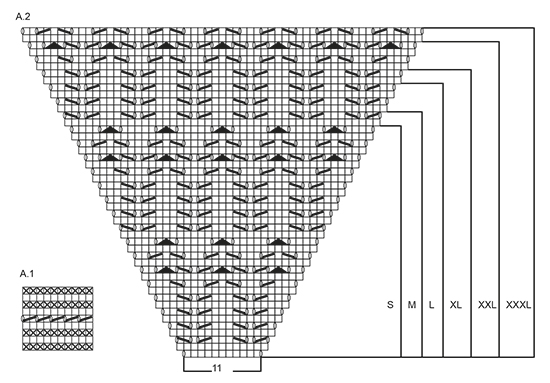 |
|||||||||||||||||||
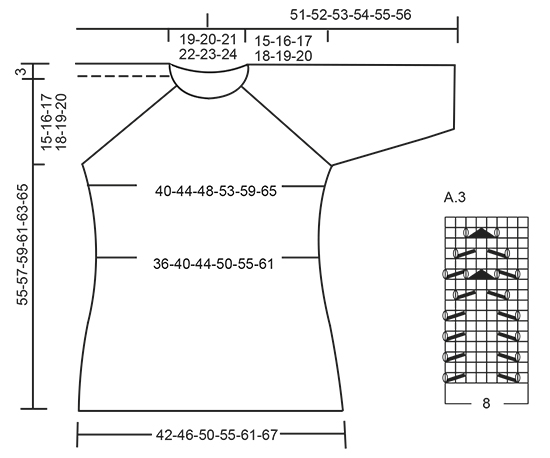 |
|||||||||||||||||||
¿Terminaste este patrón?Entonces, etiqueta tus fotos con #dropspattern #seanymphsweater o envíalas a la galería #dropsfan. ¿Necesitas ayuda con este patrón?Encontrarás 25 videos tutoriales, un espacio para comentarios/preguntas y más visitando la página del patrón en garnstudio.com © 1982-2025 DROPS Design A/S. Todos los derechos reservados. Este documento, incluyendo todas sus sub-secciones, está protegido por los derechos de autor (copyright). Lee más acerca de lo que puedes hacer con nuestros patrones en la parte de abajo de cada patrón de nuestro sitio. |
|||||||||||||||||||









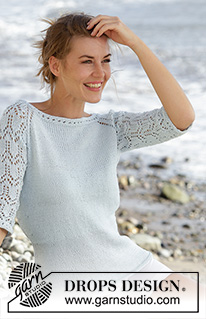




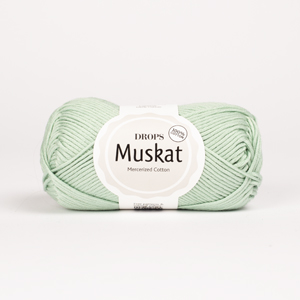













































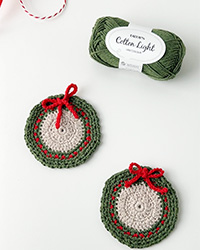


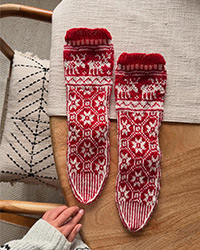

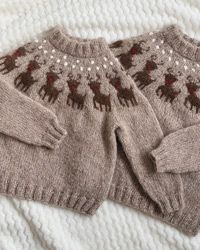
Escribe un comentario sobre DROPS 168-1
¡Nos encantaría saber qué piensas acerca de este patrón!
Si quieres escribir una pregunta referente al patrón, por favor asegúrate de elegir la categoría correcta en el formulario debajo, para acelerar el proceso de respuesta. Los campos obligatorios están marcados con un *.